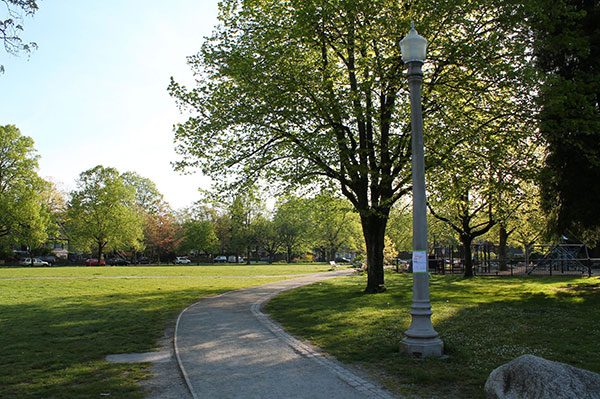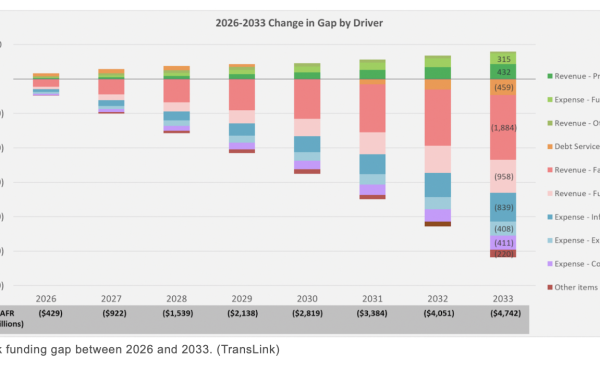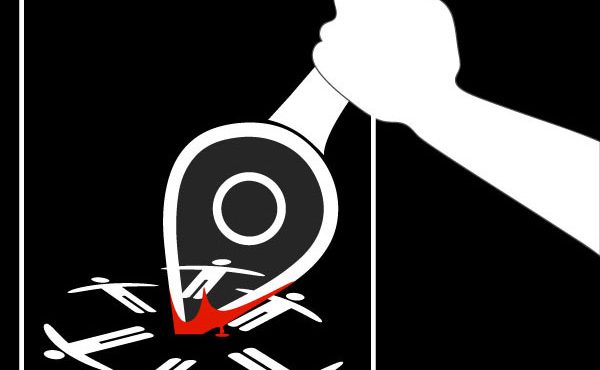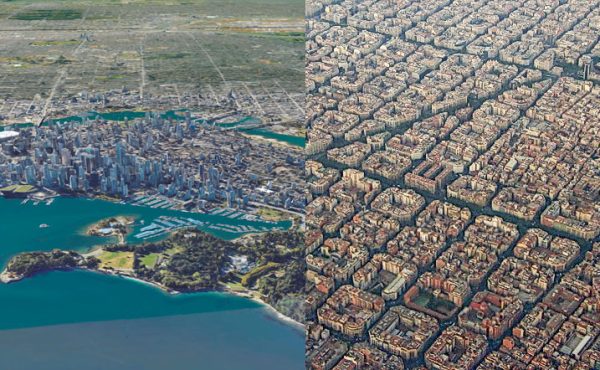
Parks are an important part of the contemporary city. Yet, the fact that parks are so common place makes critically discussion around them increasingly rare. With this in mind, Spacing Vancouver’s Erick Villagomez had the unique opportunity to discuss the subject of parks with Matt Hern, Daisy Couture, Selena Couture, and Sadie Couture—authors of the recently launched On This Patch of Grass: City Parks on Occupied Land that acutely examines Grandview Woodland’s Victoria “Bocce Ball” Park.
EV: For those who may not know who you are, can you tell us a little about yourselves and your interests?
Matt: The simple answer is that we are a family. We’ve lived in East Vancouver on səlil’wətaʔɬ (Tsleil-Waututh), Skwxwú7mesh (Squamish), and xʷməθkʷəy̓əm (Musqueam) territory for about 25 years (some of us our whole lives!). As a group we are fairly bookish, love playing games, our cats, cooking big meals, goofing off and being outside.
Personally, I write and lecture, mainly about ecological theory and organizing, radical urbanism, resistance to displacements and basketball, and spend most of my time in Surrey working with with youth at Solid State Industries—a project I cofounded that’s building a network of workers co-operatives with newcomer teens.
Daisy: I’m a student at UBC, studying English Literature and Psychology (with particular focus on Poetry and Neuropsychology). I’m a brain nerd, photographer, and love all things books.
Selena: I finished my doctorate in theatre studies at UBC in 2015 and now work as an assistant professor of Canadian theatre at U of Alberta in Treaty 6 territory and Métis homelands. Research interests-wise, I work with Indigenous performance, place, Indigenous languages and historiography alongside a continuing inquiry into performative constructions of whiteness.
I’m an 11th generation descendent of French settlers and a 6th generation descendent of Irish settlers who came to the eastern areas of the lands now called Canada. I worked as a teacher in alternative schools for many years after moving west in the early 1990s, and then went to grad school. I love being with friends and family, riding my bike (even in the rain), camping and fixing broken things around the house (usually with some combination of duct tape and egg cartons).
Sadie: I usually characterize myself as an artist and thinker. I work with a range of digital media, right now mainly focusing on audio pieces (I co-produce a podcast about oral history called COHDScast, and am gearing up to collaborate on a digital sound map of Mayne Island). I spend a lot of time quilting, and am doing an MA in Media Studies at Concordia in Montreal/Kanien’kehá:ka territory focusing on radio history, and sound studies.
Mainly what we have in common is each other, a desire to care for the place(s) where we live, and to think through our roles as a white settler family committed to each other and the people and around us.
EV: That’s a great mix of minds in a single household! This makes it even more interesting that you all decided to write a book together. You mentioned that despite your differences, what you all have in common is a desire to care for the places you live in and to think through your roles as white settlers committed to one another and those around you. Can you tell me how this sparked the project? Was it a mutual decision from the start?
Sadie: I remember the project originally being an idea of Matt’s. I think the plan was to work on something together, and the book kind of emerged as a way for us to combine our interests and make something cool in the process! I think our divergent backgrounds and perspectives are reflected in the book: as a kind of scrappy look at the topic through a variety of lenses.
It’s been a bit of a challenge balancing our different approaches, but I also think it’s part of what makes the book valuable and interesting as a finished product. There’s essays and pictures and interviews and drawings and we hope that because of that there will be something for everyone and new ways of thinking about the park, and land and place can be teased out through our approach. And, a major part of the finished product is also contributions from other people. As soon as we started working on the project, we knew there were a lot of other voices we wanted to have in there. And that’s part of why I interviewed so many people, and why we asked some of our amazing contributors and collaborators to help us think through these issues!
EV: I’d love to talk some more about the interesting structure of the book with its interviews, photos and drawings, but before getting into the nitty-gritty I’m interested in hearing from Matt about what sparked the idea for the publication—that is, focusing on a seemingly non-descript park to speak to some heavy issues around politics of land?
Matt: I think the idea came sort of incrementally. We’ve rented the same house for the past 20 years now right beside Bocce Ball Park, so the park has always been a place we pay attention to: when there are repairs happening, when there is someone down, when there is an event, or just on a quotidian day-to-day basis.
But Bocce, like so many other parks, has always been a flashpoint for neighbourhood debates about land-use. Who gets to be there, who gets to drink there, who the park is for. Like every city park, Bocce plays a central role in understanding this neighbourhood.
But so much of that conversation is irritatingly uncritical and incurious about how parks actually behave and how they inscribe and re-inscribe power relations. Talk about parks relentlessly returns to naive platitudes about ‘green space’ and ‘the commons’ and all the other bullshit cliches that get thrown around sans much criticality. And far too infrequently do people – obviously, mostly white people – have any interest in looking at parks through a decolonizing analysis.
We are always looking for stuff to do together as a family and with our pals. Since the kids are grown, this becomes more complicated all the time, but we are all nerds, like researching and writing, and this is a place we all have a lot of experience with and opinions about – so it just seemed like something fun to do together.
EV: I find this sharp critical nature you touch on as a defining element of the book interesting particularly in the context of Denise Ferreira da Silva describing the book in her Foreword as “..this family’s love letter to this city and its ancestral custodians and colonial residents (settler’s)…” One typically associates love letters with a more romantic, idealized approach versus a critical one. How do you interpret her words?
Selena: Thanks for the question Erick – and yes I was a bit surprised when I read that in her preface. But it actually is a great way to think about the book. Love motivates so much of the work – love for all of our friends and relations, love for where we’ve been living. But feeling attached to each other and our surroundings in ways that celebrate a romantic or sentimental ideal is certainly not what we’re going for. One thing that makes me a bit uncomfortable is when people hear that our family wrote a book and their immediate reaction is “that’s so cute.” Things are way too complicated to reduce ‘love’ to that: all of our health and happiness has been created by structures that were built on the pain and suffering – and even hate – of others. We can get up every day and love each other, and our home and this patch of grass, but that’s not going to change those structures. So the book project tries to deploy some of that love for something beyond sentimental self-satisfaction. Our love for this place animates a rage at those people and those structures who are damaging it so willfully.
EV: There is definitely a compelling tension there. In the Foreword, Denise Ferreira da Silva also describes the book as “fragmentary”—it’s something she sees as one of the most powerful elements of the book, in that it doesn’t attempt to describe a singular position on the important issues and themes of the book you mentioned. Instead, it attempts to gather many voices within a cohesive, compact package. And I think this is a good stepping stone into the unique structure of the book, with its mix of essays, interviews and visuals. Can you describe how and why you decided on this distinctive format?
Sadie: I see the form of the book as really stemming from each of our interests at the time, and as being a reflection of how each of us wanted to interact with the park. I am not sure if it was intuition, or just a happy accident, but I think at some point the approach became central to how we started thinking about the ideas. I think the scrappy and somewhat disorienting combination of the essays, interviews, photos and commentary speak to some of the core theses of the book: the overlapping sovereignties of the place, the dense number of users of the park, how each of our experiences with the park are fragmentary, contextual, and of course partial. I hope that these ideas get through of course in the content of the book, but also through the approach and form. To some extent also we chose the mixed form to hold people’s interest, and make some of the ideas more accessible. People are attracted to photos and interviews, and maybe they will stick around for the essays too!
EV: This brings me to one of my favourite and, in my opinion, understated aspects of the book, Daisy’s photo essay of Bocce Ball Park: 365 photos—1 for each day of 2015—taken from the same location and point of view. The chapter showcasing this wonderful project only has 22 of the 365 images, with a handful of others peppered throughout the book. As such, the book itself is really a teaser for Daisy’s work. And although it is great that you created a sibling website focused on the photos, I think it goes without saying that it would have been incredible to see all the photos printed together. Perhaps this is a future exhibit in the making! [smile]
Regardless…Daisy, I’d love to hear more about this aspect of the book. More specifically, what inspired you to do this? Of all the possible locations, why did you choose the corner of Salisbury Dr. and Grant St.? And what insights did you glean from your undertaking?
Daisy: The idea for the photos was originally Matt’s. I’d started to get interested in photography a few years before and he suggested the daily photos of the park as my way to contribute to this book. I took the photos throughout 2015 and, for most of the time I was taking them, they were the only part of the book that existed in any physical (or digital!) form; it took me a while to figure out what I was looking for in each of the photographs and what I wanted to capture.
As for the location, I originally tried out quite a few different views but eventually settled on this one, the southwest corner of the park, for a few reasons. It’s the corner that sees the most traffic – it’s the closest to the Drive and with that transit and the liquor store, as well as being closest to the playground – and I knew I wanted to not just document the park throughout the year but also all of the people of the park. But, more importantly, this view is how I think of the park. It’s the way you enter it from our house and the way I walked to school every day for five years; when I imagine the park it is always from that corner.
This project made me see the park differently for it was the first time I ever stopped to actually look at the park from the outside; until then it had been a space to go to play and hang out, to read and to run but this project made me look at it as a place, as something that could be observed. I tried to take the photos at a variety of times to ensure that I captured the park in its entirely (or as much as I could from a fixed point), rather than just during the rhythms I easily fit into and so saw more of the park than I ever had before.
EV: It really is amazing how much we miss going about our daily lives, isn’t it? I think your thoughtful insight that the Park is different from ‘within’—experienced through use—than from the ‘outside’—something observed in a more detached way—very interesting. Do you mind elaborating a little more on that thought and how that changed your perception of Bocce Park…and perhaps urban parks more broadly?
Daisy: Of course! Growing up with park, it was very much a space where I felt I belonged but I thought of it in largely selfish and self-centred terms; it was my park, where I had done this and that. Taking the daily photos helped me see the space more objectively as somewhere with multiple, often conflicting, narratives, that is enjoyed in many separate ways. From inside the park I only considered the way I related to it but the photos helped me observe how many other ways there were of relating to the park. This experience has led me to consider urban parks in a more objective way and try to think about the political and social place they serve in communities.
EV: This ‘inside’ vs ‘outside’ discussion is a great segue into Sadie’s “Park Goers” chapter that sets out to get highly personalized accounts of Bocce Park through interviews with a diversity of park users. Sadie…your introductory essay in the chapter really cuts across a variety of important issues. One of the narrative threads I found particularly provocative was around the idea that the sheer diversity of users of this small, humble park made a finding a singular narrative around the park impossible. Something touched on in Denise Ferreira da Silva’s Foreword, as mentioned earlier. This runs counter to standard political and planning practices that attempt to generate, define and push very singular narratives around the creation of urban spaces, including parks. I’m interested in hearing your thoughts about the tension between these two different realities.
Sadie: Parks are often thought of in our collective imaginary as universal or simple goods. Places used by all, and ones which unconditionally and unproblematically bring health, peace, joy, and leisure into our lives. We knew this not to be true of Bocce Park, and in this book we are definitely hoping to muddy this narrative for parks in general as well as in particular, and to offer a vision of multiplicity which isn’t often present in the conversation around parks. And I see ‘The Park Goers’ as an example of putting the idea or theory of multiplicity into practice. Rather than just saying that we think it’s not possible to have one narrative around the park, to actually do it. And the results can be somewhat disorienting at times, and uncomfortable. There are perspectives represented in our book that I don’t agree with, and yet they’ve been included lightly edited and only somewhat editorialized. So that was a learning process for me, learning how to put my politics into practice, learning how to be ok with confusion and contradiction and risk, and being ok with actually not offering a single narrative despite the urge to do so.
EV: It’s interesting how your experience maps onto Selena’s closing essay, Titling Victoria Park: an important and weighty historical analysis of the property title to the Park’s land that highlights the many assumptions around property ownership by the settlers and the Indigenous resistance to it. Selena, I’d love to hear more on the complex relationship between settlers and the Indigenous community and how it changed your perspective on the Park.
Selena: Relationship is an interesting and important word to focus on – and also one of the reasons I find digging into archives and historical narratives so important. Part of the privilege that has been created through settler colonialism in Canada is that settlers believe (and act like) they can come and go from Indigenous peoples’ territories at will and without relation to the Indigenous peoples or their lands except one of commodity. By returning to the history of how this (lack of) relation has been created – we may be able to see the conscious colonial choices that created this disconnect.
A quick example from my chapter is Dr. Israel Wood Powell (1836-1915), who owned the land from 1885-1890. He was a major political figure in pre-Confederation BC – and a land speculator who was the fifth-largest landowner in the city by 1887. He also used his influence to set up reserves, lobby for the federal ban on “potlatches,” and create boarding schools for assimilation. I think of Powell now (when I see Powell Street in east Van) as holding all of this history: a man who was a member of the government that chose (knowingly) to ignore Indigenous land title, financially benefitted from the purchase of stolen lands while creating infrastructures that aimed to break the relationships within Indigenous kinship networks and with their lands – while also setting up a segregated society in which settler wealth depended on Indigenous impoverishment.
This is an ugly history – and it’s not surprising that settlers would rather not have to confront it by being in relation with Indigenous people. Yet, once it is known, the only ethical choice is to work to change that relation. And, fortunately, there are many many people who have been working to do so. What has been most useful, for me, has been to find places of Indigenous sovereignty that are set up to educate and create relationships with non-Indigenous people.
EV: Well, think it’s fair to say that you and the rest of the family here are certainly playing a large part in trying to highlight and change the ugly relationship you describe. And for that you deserve many thanks. Are there any other final thoughts any of you would like to share?
Matt: Thanks!
***
To learn more about On This Patch of Grass: City Parks on Occupied Land and access some of the additional content, such as Daisy Couture’s photo essay, visit the Fernwood Publishing website.
*
Other Spacing Vancouver and Spacing interviews:
- Downtown in Transition: An Interview with Sean Bailey
- Embracing the Future: An Interview with Kobus Mentz
- Inequality, Gender, Intersectionality, Gentrification, and the City: An interview with Leslie Kern
- Talking Landscape Architecture: An Interview with Marc Treib
- Architecture and Capital in the 21st Century: An Interview with Matthew Soules
- On Interior Urbanism: An Interview with Jeremy Senko
- From Chief Planner to “Urban Ronin”? Chatting about legacy, and the future, with Brent Toderian – Part 1
- From Chief Planner to “Urban Ronin”? Chatting about legacy, and the future, with Brent Toderian – Part 2
- Optimizing Social Connection: An Interview with Saif Khan
- On This Patch of Grass: An Interview with Matt Hern, Daisy Couture, Selena Couture, and Sadie Couture
- THE ARTFUL CITY: An Interview with Sean Martindale
- Vaudeville Vancouver: An Interview with Tom Carter
- Women in Design: An interview with Johanna Hurme of 5468796 Architecture
Living History: An Interview with Eve Lazarus - Where Happiness and Urban Design Intersect
- 2012 InReview: Gregor Robertson Interview
- Malcolm Bromley & Constance Barnes Interview – Part 1
- Malcolm Bromley & Constance Barnes Interview – Part 2
- Malcolm Bromley & Constance Barnes Interview – Part 3
- Malcolm Bromley & Constance Barnes Interview – Part 4
- From Chief Planner to “Urban Ronin”? Chatting about legacy, and the future, with Brent Toderian – Part 1
- From Chief Planner to “Urban Ronin”? Chatting about legacy, and the future, with Brent Toderian – Part 2




